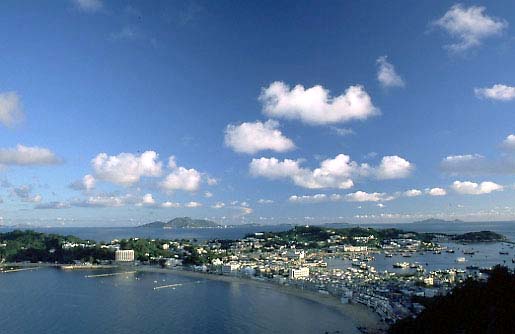Though just three kilometres (1.8 miles) long, Cheung Chau boasts plenty of variety for visitors. In the middle is an easy–going village, with few buildings higher than three storeys, narrow streets, and no cars except the scarcely seen police car. West of the village is a harbour that’s home to Hong Kong’s main fishing fleet; there are beaches to the east, and to north and south are granite hills with convoluted coastal trails.
1-2hrs travelling; 2-5 hrs strolling
Getting there There are regular ferries from Outlying Islands pier, Central, with fast ferries taking a little over half an hour, regular ferries almost an hour.

Outings As you exit the ferry pier on Cheung Chau, note that north is to your left, and you’re now on a narrow strip of land with the main beach less than five minutes’ walk ahead of you. So, where to go first?
North – to the temple to Cheung Chau’s main god, Pak Tei, the Northern King. Walking along the waterfront, you pass small shops, and a row of seafood restaurants, after which you’ll find the temple. This is the focus of the Cheung Chau Bun Festival, held in late spring each year. From the left of the temple, you can walk up steps to a concrete playground, where a right turn leads to a lookout pavilion with panoramic views over Cheung Chau, and Lantau, Lamma and Hong Kong islands. A narrow road curls down to the west coast, and back to the village.
South from the pier, you can follow the waterfront to Sai Wan village, then cross a headland towards Cheung Po-tsai Cave. The cave’s nothing special, but just before it is a narrow flight of steps, down between boulders to a track that skirts a rocky cove, and leads to a narrow bay with a beach. A winding trail from the beach joins Peak Road – a footpath that can take you back to the main village.
Walk straight from the pier, and you’ll quickly find Tung Wan beach, which is popular in summer. South of this is smaller Kwun Yam Beach. Then, the coastline is rugged, with a fancy footpath locals have dubbed the Mini Great Wall, winding by naturally sculpted granite boulders, including Human Head Rock.
Info from Hong Kong’s Great Outdoors
